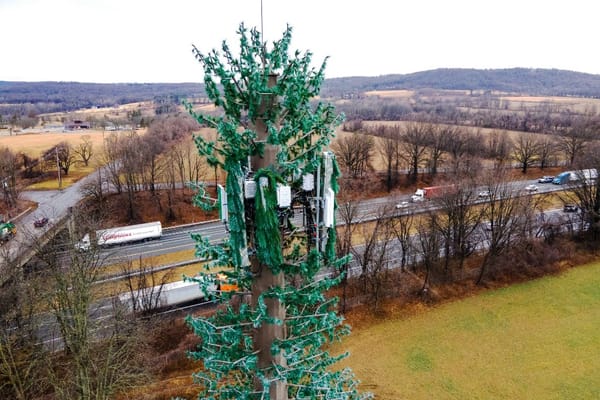FCC Enhances Broadband Access on Airplanes and Vessels with New Spectrum Rules
Companies have been eyeing the 70/80/90 GHz bands to power alternatives to satellite.
Jericho Casper

January 29, 2024 – The Federal Communications Commission recently adopted new regulations for the 70/80/90 gigahertz spectrum bands in an effort to expand broadband access on-board airplanes and passenger ships.
These regulations, adopted Wednesday, bring updates to existing rules for the 71–76 GHz, 81–86 GHz, 92–94 GHz, and 94.1–95 GHz bands.
The changes authorize specific point-to-point connections to moving endpoints within the 70 and 80 GHz bands, aiming to enhance the use of these frequencies for in-flight and maritime broadband services.
“Satellite operators see real potential for these bands to expand the capacity of our satellite broadband networks,” notes FCC Commissioner Geoffrey Starks in a statement. At the same time, “companies have been eyeing these bands to power faster and cheaper alternatives to satellite on planes, ships, and offshore platforms.”
To promote more intensive use of spectrum in the 70 and 80 GHz bands, including use of backhaul to deploy 5G wireless, the commission also adopted rules making several modifications to the antenna standards of these bands.
In a nutshell, these changes improve how antennas listen, speak, and interact with each other, making communication more efficient in the 70/80/90 GHz bands.
The FCC adopted proposals to increase maximum antenna beamwidth from 1.2 degrees to 2.2 degrees, allowing the antennas to “hear” from a wider angle, which will aid in capturing signals more effectively.
In technical terms, the new antenna rules “reduce minimum antenna gain from 43 dBi to 38 dBi, while retaining the proportional EIRP reduction requirement.” In layman’s terms, this change makes it so antennas don’t have to be as loud, reducing the minimum volume requirement from 43 to 38. But, keeping a rule that ensures they’re not too quiet when needed.
The rules “eliminate the co-polar and relax the cross-polar discrimination requirements at angles less than 5 degrees,” meaning the FCC removed some rules that make antennas overly cautious when talking to each other at certain angles. Think of it as allowing better conversation between antennas close to each other.
The rules “revise the co-polar and cross-polar discrimination requirements at angles between 5 degrees and 180 degrees” updating how antennas communicate with each other at different angles. Imagine adjusting how you talk to someone depending on whether they’re right in front of you or a bit to the side.
Finally, the new antenna rules “allow minor modifications to registrations in the 70/80/90 GHz bands without the loss of first-in-time rights.” Meaning the FCC is making it easier for companies to make small changes to their communication setups without losing their spot in line.
“We are maximizing the use of these bands by allowing them to also be used for small, lower-cost antennas that can assist with 5G backhaul,” wrote FCC Chair Jessica Rosenworcel in a statement. “On top of expanding the opportunities for connection in transit, we are growing the opportunities for the use of these bands in places where other backhaul efforts have proved challenging.”
“I wouldn’t be surprised if the very short wavelengths all the way up in the 70/80/90 GHz bands end up serving as a backbone of U.S. communications networks,” said Starks.
The commission coordinated with NTIA prior to adopting any rules in this proceeding that would affect federal users.
In the 70 and 80 GHz band, fixed, mobile, and broadcasting services must not interfere with the fixed-satellite service operations of 28 military installations. Additionally, in the 80 GHz band, and in the 92–94 GHz and 94.1–95 GHz bands, licensees proposing to register links located near 18 radio astronomy observatories are required to coordinate their proposed links with those observatories to prevent interference.
The 94–94.1 GHz frequencies are designated for federal use, specifically for earth exploration satellite, radiolocation, and space research, as well as non-federal use for radiolocation. Moreover, the adjoining 86–92 GHz band is allocated for both federal and non-federal earth exploration satellite, space research, and radio astronomy services.
In a Further Notice of Proposed Rulemaking, the commission invites public comment on the potential incorporation of ship-to-aerostat transmissions into maritime operations and the inclusion of fixed satellite service earth stations in the light-licensing regime of the bands.
The FCC unanimously adopted the NPRM seeking comment on adopting new rules to further non-federal uses of the 70/80/90 GHz bands under former FCC Chair Ajit Pai in June 2020.












Member discussion